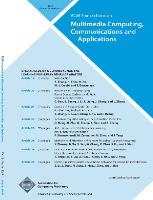
ACM Transactions on Multimedia Computing Communications and Applications
Scope & Guideline
Advancing Knowledge in Multimedia Technologies.
Introduction
Aims and Scopes
- Multimedia Content Analysis:
Research focused on the analysis and understanding of multimedia content, including image, video, audio, and text data. This encompasses techniques for classification, segmentation, and recognition of various media types. - Multimodal Learning and Integration:
Exploration of methods for integrating multiple modalities (e.g., text, audio, video) to enhance the understanding and processing of multimedia data. This includes deep learning approaches that leverage diverse data sources. - Quality Assessment and Enhancement:
Studies aimed at evaluating and improving the quality of multimedia content, including perceptual quality metrics, enhancement techniques, and restoration methods for degraded media. - Multimedia Networking and Communication:
Research on the transmission, streaming, and communication of multimedia content over networks, focusing on protocols, optimization techniques, and quality of experience (QoE) metrics. - Security and Privacy in Multimedia Systems:
Investigation into security measures, privacy protection, and data integrity in multimedia applications, including encryption, watermarking, and secure data sharing. - Applications of Multimedia Technologies:
Application-driven research exploring the use of multimedia technologies in various domains, such as healthcare, entertainment, education, and smart cities. - Emerging Technologies and Trends:
Studies on the impact of emerging technologies like AI, blockchain, and IoT on multimedia computing, including their applications and implications for future multimedia systems.
Trending and Emerging
- Deep Learning for Multimedia Applications:
There is a significant increase in research utilizing deep learning techniques for various multimedia applications, including image classification, video analysis, and content generation, driven by advancements in neural network architectures. - Multimodal Interaction and Fusion Techniques:
Research focusing on the integration of multiple modalities (e.g., vision, speech, text) to improve system performance and user interaction is gaining traction, reflecting the need for more comprehensive understanding in multimedia systems. - AI in Content Creation and Enhancement:
The application of AI technologies, such as generative adversarial networks (GANs) and reinforcement learning, in content creation (e.g., video synthesis, style transfer) is becoming increasingly popular. - Ethics and Fairness in Multimedia AI:
As AI technologies become more pervasive in multimedia applications, there is a growing emphasis on ethical considerations, bias mitigation, and fairness in AI algorithms, highlighting the need for responsible AI development. - Real-time and Edge Computing for Multimedia Processing:
Research on real-time processing techniques and edge computing solutions for multimedia applications is on the rise, driven by the demand for low-latency and efficient processing in consumer devices and IoT systems. - Applications of Blockchain in Multimedia Security:
The exploration of blockchain technology for enhancing security and privacy in multimedia applications, including copyright protection and secure content sharing, is emerging as a significant area of interest.
Declining or Waning
- Traditional Image Processing Techniques:
There is a noticeable decline in the emphasis on conventional image processing methods (e.g., basic filtering, classical segmentation techniques) as the focus shifts towards more advanced AI-driven approaches. - Simple Multimedia Compression Algorithms:
Research on basic or traditional compression algorithms is waning as the field increasingly prioritizes the development of more sophisticated, machine learning-based techniques for multimedia encoding and compression. - Single-Modal Systems:
The focus on single-modal systems (e.g., only visual or only audio processing) is decreasing, giving way to more integrated multimodal approaches that combine various types of data for enhanced performance. - Basic Multimedia Retrieval Systems:
The exploration of straightforward multimedia retrieval systems is declining as the community moves towards more complex, context-aware, and intelligent retrieval methods that leverage deep learning. - Limited User Experience Studies:
Research centered solely on technical aspects of multimedia without considering user experience (UX) is becoming less common, as there is a growing recognition of the importance of user-centered design in multimedia applications.
Similar Journals

International Journal of Interactive Multimedia and Artificial Intelligence
Advancing Knowledge in Interactive TechnologiesThe International Journal of Interactive Multimedia and Artificial Intelligence, published by UNIV INT RIOJA-UNIR in Spain, is a leading Open Access journal that has been fostering knowledge dissemination in the field since 2008. With an ISSN of 1989-1660 and an impressive impact characterized by its Q1 and Q2 rankings across major categories in Artificial Intelligence and Computer Science, the journal serves as a crucial platform for researchers and professionals eager to explore innovative applications and technological advancements. This journal is particularly distinguished by its commitment to high-quality peer-reviewed research, evident in its current Scopus rankings, which place it among the top percentile in various computer science domains, including Statistics, Signal Processing, and Computer Vision. The journal's scope encompasses a wide array of topics that intersect with multimedia and artificial intelligence, making it an invaluable resource for students and emerging scholars aiming to deepen their understanding and contribute to these vibrant fields. Through its Open Access model, it ensures that research is accessible to a global audience, thus enhancing the visibility and impact of the scientific discourse.
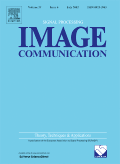
SIGNAL PROCESSING-IMAGE COMMUNICATION
Unveiling the Future of Visual TechnologySIGNAL PROCESSING-IMAGE COMMUNICATION, published by Elsevier, is a leading journal in the fields of Computer Vision, Signal Processing, and Electrical Engineering. With an impressive range of Quartile rankings in 2023, including Q1 in Electrical and Electronic Engineering and Q2 in Signal Processing, this journal is vital for researchers and professionals seeking the latest advancements and comprehensive studies in image communication technologies. Issued in the Netherlands, SIGNAL PROCESSING-IMAGE COMMUNICATION has been an essential resource since its inception in 1989, fostering innovation and collaboration among academia and industry. The journal provides a platform for high-quality peer-reviewed research, addressing significant challenges and solutions in the convergence of image processing and communication. Although currently not an Open Access journal, it offers subscription options that ensure a broad dissemination of groundbreaking knowledge. With a robust reputation reflected in its Scopus ranks, this journal serves as an indispensable reference for students and experts aiming to stay at the forefront of developments in this dynamic field.
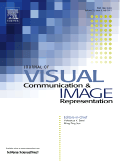
JOURNAL OF VISUAL COMMUNICATION AND IMAGE REPRESENTATION
Exploring the Art and Science of Image RepresentationJOURNAL OF VISUAL COMMUNICATION AND IMAGE REPRESENTATION, published by Academic Press Inc Elsevier Science, is an influential platform dedicated to the realms of visual communication, media technology, and advanced image representation. With a strong focus on interdisciplinary approaches, this journal aims to foster the exchange of innovative ideas among researchers and professionals in the fields of computer vision, image processing, and signal processing. Recognized for its significance, it boasts an impressive impact factor within its category quartiles; notably, it ranks Q2 in Computer Vision and Pattern Recognition and Electrical and Electronic Engineering, while achieving Q1 in Media Technology. Based in the United States, the journal not only provides valuable insights into the latest developments from 1990 to 2024 but also encourages cutting-edge research that enhances multimedia systems and user interactions. As a vital resource for students, researchers, and industry professionals alike, the journal ensures a robust understanding of visual information processing, critical for navigating today's digital landscape.

MOBILE NETWORKS & APPLICATIONS
Elevating Mobile Research to New HeightsMOBILE NETWORKS & APPLICATIONS, published by Springer, is a leading journal in the fields of Computer Networks and Communications, Hardware and Architecture, Information Systems, and Software. With an impact factor that underscores its significance in the realm of mobile computing, this journal serves as a critical platform for disseminating cutting-edge research and innovative applications from both theoretical and practical perspectives. Established in 1996 and continuing until 2024, it has consistently ranked within the Q2 quartile across various computer science categories, highlighting its commitment to excellence and rigorous peer review. The journal's reach extends globally, providing valuable insights to researchers, professionals, and students alike. Notably, it occupies impressive ranks in Scopus, including 51st in Computer Networks and Communications and 26th in Hardware and Architecture, illustrating its high standing in the academic community. Engaging with this journal means accessing a wealth of knowledge that drives forward the rapidly evolving landscape of mobile networks and applications.
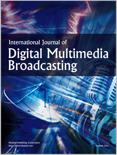
International Journal of Digital Multimedia Broadcasting
Bridging Disciplines in Digital BroadcastingThe International Journal of Digital Multimedia Broadcasting is a leading scholarly platform dedicated to the interdisciplinary exploration of digital multimedia broadcasting, published by HINDAWI LTD. With an ISSN of 1687-7578 and an E-ISSN of 1687-7586, this Open Access journal has made significant strides since its inception in 2008, ensuring wide accessibility and dissemination of research. Based in the United States, at Adam House, 3rd Flr, 1 Fitzroy Sq, London W1T 5HF, England, the journal covers a range of topics relevant to Communication, Electrical and Electronic Engineering, and Media Technology, boasting impressive Scopus rankings that highlight its influence in these fields. As part of the Q3 category in Communication and Electrical Engineering, and Q2 in Media Technology for 2023, the journal serves a vital role in fostering the understanding of technological advancements and their applications in multimedia broadcasting. Researchers, professionals, and students are encouraged to contribute to and benefit from the journal's rich repository of knowledge, paving the way for innovative developments in this dynamic industry.

Journal of Computer Security
Fostering breakthroughs in secure computing practices.Welcome to the Journal of Computer Security, a premier publication dedicated to advancing the field of cybersecurity and digital safety. Published by IOS PRESS, this esteemed journal has been at the forefront of research since its inception, with a rich history spanning from 1992 to 2024. Based in the Netherlands, the journal aims to provide a reputable platform for researchers and professionals to disseminate innovative findings in various subfields, including computer networks, hardware architecture, and software engineering. With its current Q3 ranking across multiple categories and a focus on safety, risk, reliability, and quality, the journal plays a critical role in shaping contemporary discourse and fostering collaboration within the cybersecurity community. Though it is not an open-access journal, the Journal of Computer Security remains a vital resource for academics and practitioners alike, offering access to significant advancements and methodologies that guide the evolution of security practices worldwide. Engage with us and contribute to this dynamic field of study!
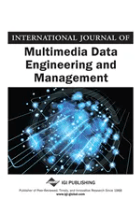
International Journal of Multimedia Data Engineering & Management
Connecting Ideas in Multimedia Data EngineeringInternational Journal of Multimedia Data Engineering & Management, published by IGI Global, is a pivotal platform for the dissemination of knowledge in the fields of multimedia data engineering, information management, and technology-driven methodologies. With a keen emphasis on exploring innovative approaches to data management, this journal engages researchers, professionals, and students interested in the rapidly evolving digital landscape. Although currently not designated as Open Access, the journal is accessible through institutional subscriptions, fostering rigorous academic dialogue and collaboration. The ISSN for this esteemed publication is 1947-8534 (E-ISSN: 1947-8542), ensuring its global reach and recognition within the scholarly community. By bridging theoretical perspectives with practical applications, the International Journal of Multimedia Data Engineering & Management supports ongoing advancements and drives impactful research in multimedia technologies.
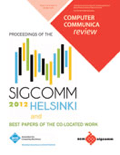
ACM SIGCOMM Computer Communication Review
Elevating discourse in computer networks and communications.ACM SIGCOMM Computer Communication Review, published by the Association for Computing Machinery, stands as a premier journal in the fields of Computer Networks and Communications as well as Software. With its ISSN 0146-4833 and E-ISSN 1943-5819, this journal is dedicated to disseminating significant research findings and advancements that shape the future of computing communication, featuring a rich archive of articles spanning from 1995 to the present. Recognized in the 2023 category quartiles as Q2 in both its core areas and achieving commendable Scopus rankings (#92/395 in Computer Networks and Communications and #108/407 in Software), the journal provides authors, researchers, and industry professionals a platform for exchanging ideas, innovations, and methodologies. While it does not operate under an open access model, the publication remains vital for understanding the evolving dynamics of computational communications. Whether you are a seasoned researcher or an emerging scholar, ACM SIGCOMM Computer Communication Review is an essential resource for staying at the forefront of this dynamic field.

IEEE MULTIMEDIA
Driving excellence in multimedia technology research.IEEE Multimedia, published by IEEE Computer Society, is a prestigious journal dedicated to advancing the fields of multimedia technology and innovations in computing. With an ISSN of 1070-986X and an E-ISSN of 1941-0166, the journal has established a significant impact within the academic community, holding an impressive ranking in various categories: Q2 in Computer Science Applications, Hardware and Architecture, Signal Processing; Q1 in Media Technology; and Q2 in Software as of 2023. Spanning from 1994 to 2024, IEEE Multimedia strives to publish cutting-edge research and development findings, focusing on the convergence of multimedia with engineering and computing disciplines. Researchers and professionals across these domains are encouraged to engage with its rigorously peer-reviewed content, enhancing their understanding and application of multimedia methodologies in their respective fields.

MULTIMEDIA SYSTEMS
Exploring the Frontiers of Multimedia InnovationMULTIMEDIA SYSTEMS, published by SPRINGER, is a premier academic journal dedicated to the dynamic field of multimedia technology and its applications across various domains. With the ISSN 0942-4962 and E-ISSN 1432-1882, this journal has established itself as an essential resource since its inception in 1993, providing researchers and professionals with rigorous peer-reviewed articles that explore innovative developments in Media Technology, Computer Networks, Hardware Architecture, Information Systems, and Software. As a testament to its academic impact, MULTIMEDIA SYSTEMS has attained a Q2 ranking in multiple key categories for 2023, alongside a notable Q1 ranking in Media Technology, highlighting its significance within the community. With a rich repository of knowledge and ongoing commitment to advancing multimedia research, this journal is an invaluable asset for those seeking to stay informed about cutting-edge technologies and methodologies. While the journal follows a traditional subscription model and is not presently open access, it ensures high-quality content that serves the scholarly needs of its audience, facilitated by its accessibility from Germany's respected academic infrastructures. For inquiries and submissions, the journal is based in New York, NY, further illustrating its global academic reach.